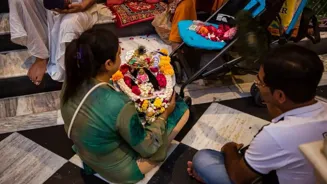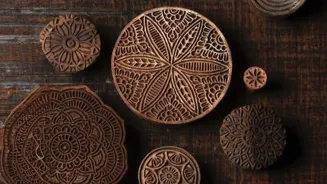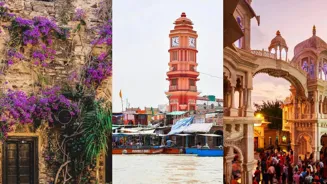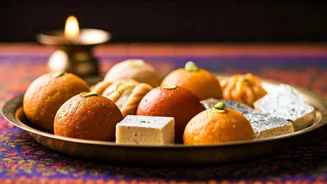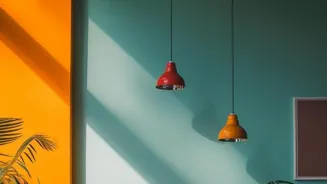Where silk meets divinity – the timeless beauty of Pichwai paintings.
On Janmashtami, devotees across the globe prepare to welcome Lord Krishna with lights,
sweets, bhajans, and colourful decorations. Among the many art forms dedicated to the deity, Pichwai paintings stand apart for their intricate detailing, vibrant colours, and sacred storytelling. Originating in the temple town of Nathdwara, Rajasthan, this ancient art is more than just decoration; it is a spiritual offering.
What is a Pichwai Painting?
The term Pichwai comes from the Sanskrit words pichh (back) and wai (hanging). Traditionally, these paintings were hung behind the idol of Shrinathji (a child form of Krishna) in temples. Crafted on silk or cotton, they are adorned with natural colours, gold leaf, and fine brushwork to depict scenes from Krishna’s life - from Govardhan Leela, Raas Leela, to the playful days in Vrindavan.

The Janmashtami Connection
During Janmashtami, temples and homes often use Pichwai art to create a festive, divine ambiance. The paintings change with the seasons and festivals; depicting Krishna in different attires, moods, with stories. For Janmashtami, vibrant depictions of Krishna’s birth, his cradle, and the night sky of Mathura come alive on silk, radiating spiritual joy.
The Artistic Process – More than Just Brush and Silk
Creating a Pichwai is an intricate process that can take weeks or even months. Artists prepare the fabric, sketch the design, and then painstakingly fill in details with natural pigments made from minerals, plants, and gold dust. Every stroke is deliberate, every colour symbolic; deep blues for divinity, reds for energy, and gold for prosperity.
Stories in Every Stroke
Pichwai paintings are not at all abstract; they are narrative masterpieces. Some popular Janmashtami-themed depictions include:
- Krishna lifting Govardhan Hill to protect villagers from torrential rains.
- The Raas Leela, capturing the rhythm, movement, and joy of Krishna’s divine dance with the gopis.
- Makhan Chor Krishna, showing the butter-loving child stealing curd from pots.

These scenes are beyond art pieces; they are visual scriptures, keeping centuries-old traditions alive.
Pichwai in Modern Homes
Originally, Pichwai paintings were designed for temple backdrops, however they have now found a place in modern interior design. From framed silk pieces in living rooms to digital prints on cushions and wallpapers, the art form is currently enjoying a global revival. For Janmashtami, many families hang a Pichwai behind their home altar, adding both beauty and spiritual depth.
Why Pichwai is Beyond Art
Pichwai paintings are a unique combination of devotion, heritage, and craftsmanship. Owning one is like owning a piece of India’s spiritual history. Every painting is uniquely handmade, just like the many forms and moods of Krishna himself.
How to Choose an Authentic Pichwai
If you’re looking to bring home a Pichwai this Janmashtami, keep these tips in mind:
- Look for hand-painted details rather than mass-printed versions.
- Authentic pieces often use natural dyes that give a vibrant, earthy look.
- Check if the artwork is from Nathdwara or made by trained Pichwai artists.

Preserving the Legacy
Today, organisations and artists are working to preserve this ancient art form, training young painters, and promoting Pichwai globally. Festivals like Janmashtami are perfect occasions to revive interest in such crafts; ensuring that future generations don’t just read about them in books but see them in their vibrant, living glory.
Janmashtami is a celebration of love, devotion, and the many leelas of Lord Krishna. Pichwai paintings offer a fabulous way to experience this festival beyond rituals, but in art that speaks to the soul.
From temples, homes, to galleries, each Pichwai is a bridge between the earthly and the divine; a silk thread that ties us to centuries of faith and beauty.


